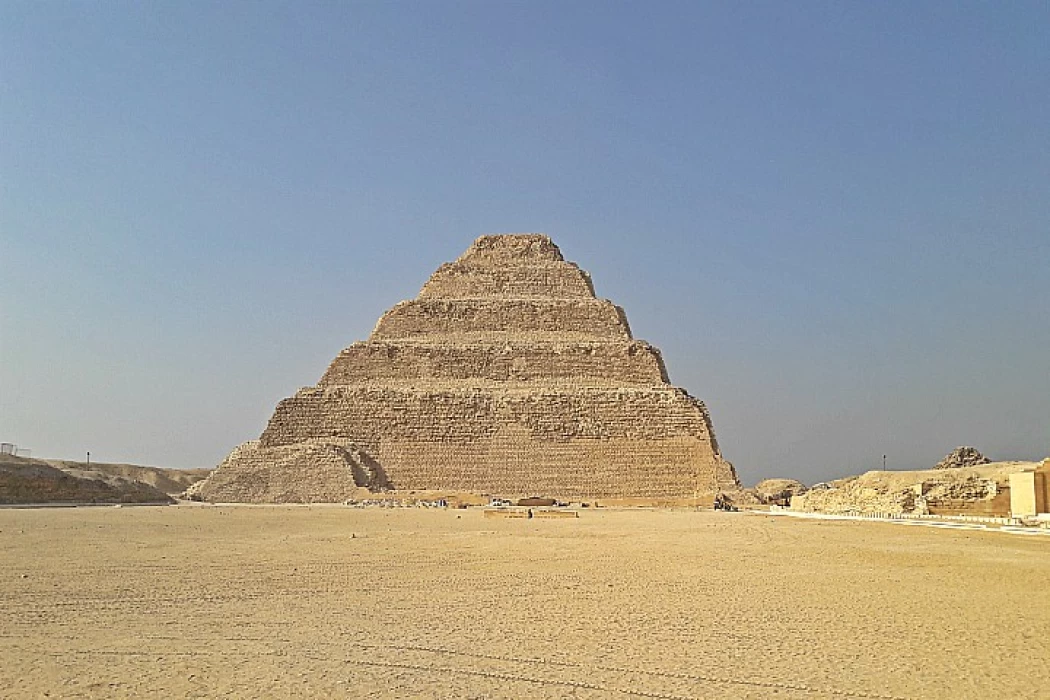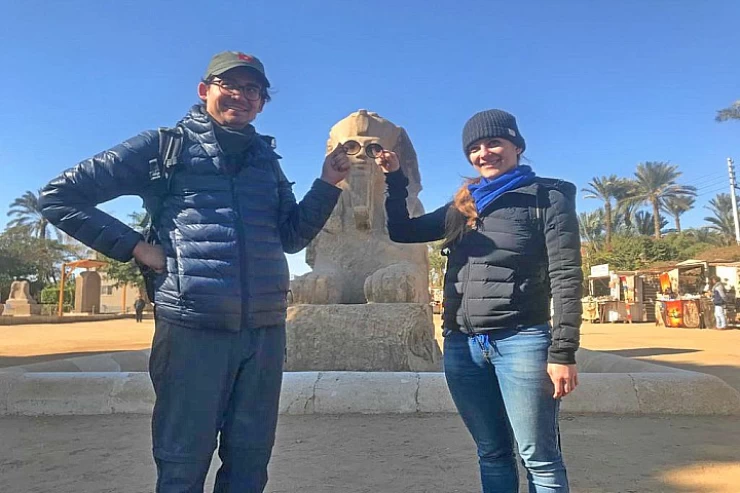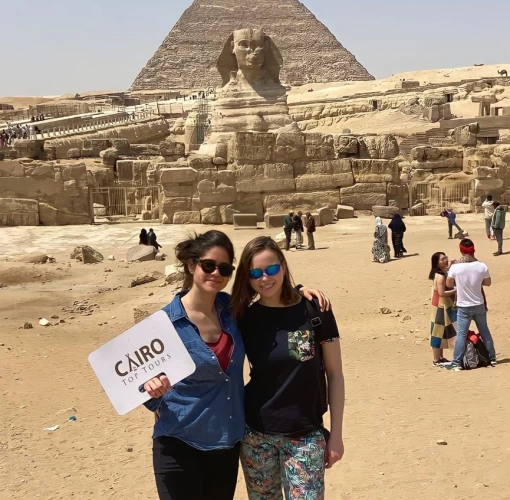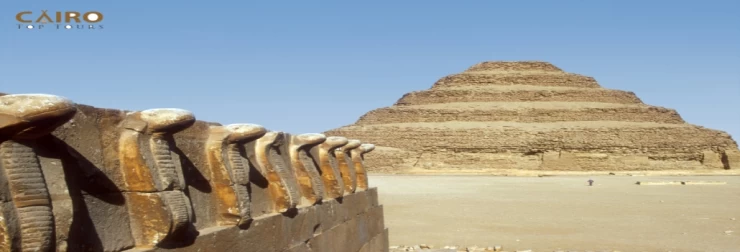
Некрополь Саккары

Саккара известна прежде всего тем, что здесь находился царский некрополь Древнего царства вплоть до III династии, а также Ступенчатая пирамида Джосера, самая древняя из всех пирамид, когда-либо построенных египетской цивилизацией.
Саккара - одно из обширных кладбищ и достопримечательностей Каира, занимающее площадь примерно 7 на 1,5 км, древнее погребальное место, служившее некрополем для древнеегипетских царей и аристократов. Наиболее важной особенностью Саккары является наличие многочисленных пирамид, включая знаменитую пирамиду Джосера, которую иногда называют ступенчатой пирамидой из-за ее прямоугольного основания (формы), а также нескольких мастаб (арабское слово, означающее "скамья"). Расположена примерно в 30 км (19 миль) к югу от современного Каира,
Ступенчатая пирамида является самым важным памятником, который можно увидеть во время многих наших индивидуальных туров по Египту. Вы сможете попасть туда во время многих однодневных туров по Египту.
Если вы начинаете путешествие по Египту в Луксоре или Хургаде, обязательно закажите однодневные туры в Каир, чтобы добраться туда. Или даже закажите перелет в Каир в оба конца и наслаждайтесь разнообразными однодневными турами в Каир из аэропорта.
Знаменитая пирамида Саккара относится к III династии (2667-2448 гг. до н.э.), на пару сотен лет раньше Великой пирамиды, и была первым в истории комплексом, построенным полностью из камня. Кроме того, она свидетельствует об обширных структурных инновациях в формировании пирамид Гизы и других более поздних пирамид 4-й династии и позже, поскольку это первая (ступенчатая) пирамида, состоящая из 6 мастаб или ступеней и иногда называемая Ступенчатой гробницей из-за своего прямоугольного основания.
Этот район является обязательным местом для посещения, если вы бронируете любой из туров в Египет или из наших разнообразных туров из Каира.
Кладбище расположено к югу от Абусира и Дахшура. Некоторые ученые считают, что название (Саккара) происходит не от древнеегипетского погребального божества Сокар, а, по-видимому, от местного берберского племени под названием ( Бени Саккара ). Территория от Дахшура до Гизы неоднократно использовалась жителями Мемфиса в качестве некрополя, и в 1979 году она была включена ЮНЕСКО в список Всемирного наследия.
Более десяти других пирамид и большое количество гробниц и погребальных храмов разбросаны вокруг ступенчатой пирамиды Джосера. а весь некрополь Саккары является свидетельством величия ранних династий Древнего Египта.
Египет встретит вас своим могучим Нилом вдоль долины Нила, когда вы будете исследовать Луксор на восточном и западном берегу. Большинство посетителей направляются прямо к самой известной достопримечательности - Великой пирамиде Хуфу. Искатели приключений, путешественники и блоггеры могут присоединиться к одному из наших бюджетных туров по Египту, проходящему через пустыню Сахара, например, туры в Сиву из Каира или, предпочтительно, туры в Белую пустыню Египта.
Вы можете заказать один из перечисленных ниже туров, чтобы осмотреть гигантскую ступенчатую пирамиду в Саккаре и множество других памятников, таких как пирамида царя Тети и царя Унаса, а также прекрасно украшенные гробницы знати, похороненной здесь на знаменитом кладбище, которое считается вратами в рай для королевских особ и высокопоставленных чиновников.
Среди гробниц знати в Саккаре находится гробница Кагемни, который был зятем самого царя Тети во времена 6-й династии.
Если Вы хотите узнать о месте под названием Гиза и посмотреть, как оно выглядит, существует специальный сайт под названием How Many Pyramids Are In Egypt. На нем вы найдете много информации и фотографий, которые помогут вам узнать больше о Гизе и ее истории.
To the southwest of Cairo and on the verge of the desert, there exists Saqqara, a design that can boast a lot about ancient Egyptian history, thus making it one of the archaeological sites. This vast expanse is known to be the extension of the burial grounds of Memphis City. Saqqara bears many interesting structures; some of them have managed to survive for more than 4700 years, containing tombs of the pharaohs, nobles, and even sacred pets. The most famous structure in the area is the Djoser Step Pyramid, claimed to be the first real pyramid and considered the largest stone-made structure of its kind within the range.
For this reason, this paper seeks to examine the historical significance of Saqqara, its major landmarks, and the beauty of this ancient city.
A Brief History of Saqqara
The historical importance of Saqqara can be traced back to the Third Dynasty of Egypt around 2650 BCE when Pharaoh Djoser ordered the construction of his pyramid complex. The Step Pyramid, designed by the legendary architect Imhotep, was a transformation in building techniques, giving way from the ordinary mud brick mastabas, which were flat-roof tombs, to decorated pine stone architecture. Over time, Saqqara developed into a large burial area that contained tombs from various dynasties and ages in ancient Egypt's history, which were the Old Kingdom, Middle Kingdom, New Kingdom, and even the later periods.
Like the rest of Memphis and its Necropolis, a UNESCO World Heritage Site, Saqqara is of great importance from the point of view of archaeology and history. Because of the many pyramids, mastabas, temples, and burial complexes present in the site, it also explain the evolution of the Egyptian way of burying their dead, the religious factors involved, and even the development of structures for several centuries.
the Step Pyramid of Djoser: An Architectural Marvel
The most important feature of Saqqara is undoubtedly the Step Pyramid of Djoser—the first ever constructed pyramid and a stunning illustration of Egyptian brilliance. The pyramid has a height of about 62 meters and consists of six steps of diminishing size so that the pyramid takes on its usual stepped shape. The architect of the chaste was the first to use stones in grand structures and set stone slabs that would later develop into the true pyramids of Giza.
Encircling the pyramid itself is a series of courtyards, temples, and other religious structures, most of which were designed to benefit the king in the next world. This includes the South Court, in which visitors may observe the ruins of several ancient shrines and altars used for ceremonial purposes. There is a huge compound wall with 14 gates encircling the complex, one of which was to be used for functional purposes, representing the final resting place of the king with no interference from the outside world.
Within the Step Pyramid structure, there exists a rat’s nest of stairways and rooms. Although the primary burial chamber was taken during antiquity, archaeologists have found astonishing amounts of items and valuables that help understand the culture and practices of the ancient Egyptians.
Saqqara’s Step Pyramid aside, the site is replete with numerous burial places of high-ranking officials, nobles, and members of the royal family. Decorated with finely carved images and wall paintings, the ancient Egyptian tombs illustrate aspects of life in ancient Egypt, including normal activities, religious practices, and iconography.
Tomb of Ti
The Tomb of Ti is one of the more recognized tombs in the Saqqara region. Ti was a high-ranking government official during the Fifth Dynasty. The tomb is famous for its intricate bas reliefs of daily activities in which Ti is shown active, such as tending to crops, going fishing, and making offerings to the deities. These images are not only beautiful but also very helpful in grasping the social, economic, and cultural aspects of the Old Kingdom.
The Mastaba of Mereruka
La Mastaba di Mereruka is another notable recognition within the Saqqara tombs. This is among the most considerable and richly decorated tombs of the necropolis. Mereruka was the visier and a son-in-law of Pharaoh Teti. His tomb contains an incredible number of rooms, a whopping thirty-two chambers, the walls of which are covered with relief images of the highest quality. The events depicted in these images give a detailed picture of many sectors of the ancient Egyptian civilization, ranging from medical practices and religious rites to leisure and domesticity.
The Serapeum: burial sites for the Apis Bulls.
The Serapeum from Saqqara is another interesting aspect that is a structure that was built primarily for burying sacred bulls referred to as the Apis, who took the guise of the god Ptah. The Serapeum consists of a series of underground corridors and galleries containing large stone coffins where the remains of the sacred bulls were interred. This complex is indicative of the Ancient Egyptians’ great love for animals and their unique beliefs about the divinization of certain animals.
New Discoveries at Saqqara: Uncovering Ancient Secrets
Saqqara remains an active site of archaeological research and exploration, and new finds help in addressing previously unknown portions of the ancient Egyptian civilization. Tombs, coffins, and a number of artifacts from different epochs ranging from the Old Kingdom to the Late Period have in recent years been excavated.
The tomb of Wahtye, a priest from the Fifth New Kingdom, monumental as it is, has a very well-preserved tomb bearing fine wall paintings illustrating the life and religious activities of the above-mentioned priest. Another important discovery presents a cache of sarcophagi and anthropoid wooden coffins, most of which are decorated; some were even closed and painted with varnish. These excavated materials help not only to understand the history of the Saqqara area more profoundly but also to reveal the importance of Saqqara as an archaeological site even in these days.
For those who would like to visit Saqqara, this place may be regarded as a temporal adventure as well as a treasure of some of the fantastic historical sites that one can find in Egypt. Allow us to share with you some useful information that would be helpful during your visit:
How To Get There: Saqqara is approximately 30 km from Cairo city center, which is southwest of Cairo, and can be reached by car quite comfortably. A number of tours include a visit to Saqqara, most of which visit other sites as well that are in the vicinity, such as the Giza pyramids and the Dahshur regions.
What to Put On: Since the location of Saqqara is situated in the desert, it's important to wear a suitable dress, and a cap, and protect the skin with sunscreen. Some good walking shoes are advisable since the ground in some places might be rugged.
Guided Tours: Even though it is feasible to visit Saqqara without the aid of a tour, the positive aspect is that a tour does help in improving the experience. Enriched guides help enrich the context and facts, making the ancient history and the importance of the site less than flat.
Other Sites of Interest: You can also make other site visits that are located within reach of Saqqara, for example, the Davis Pyramid, the Bent Pyramid, the Red Pyramid, and Memphis, all of which are located near Saqqara.
Conclusion: Saqqara’s Enduring Legacy
To say that Saqqara is important in ancient Egyptian history is a meager understatement. Its story is multilateral; it is the place where pyramid construction started and has been in use as a sacred burial site for more than three thousand years.
Saqqara comprises some of the most revolutionary structures, from the Step Pyramid of Djoser to the richly decorated niches of its temples, which reveal and preserve the creativity, religious beliefs, and longevity of ancient Egypt.
Saqqara is said to provide the best experience of the past along with the chance to tread like a pharaoh. Saqqara is such a mesmerizing place that almost every history buff and common person desirous of knowing about the ancient wonders of Egypt visits it without fail. It is still breathtaking, mysterious, and enchanting, full of timeless beauty.


















